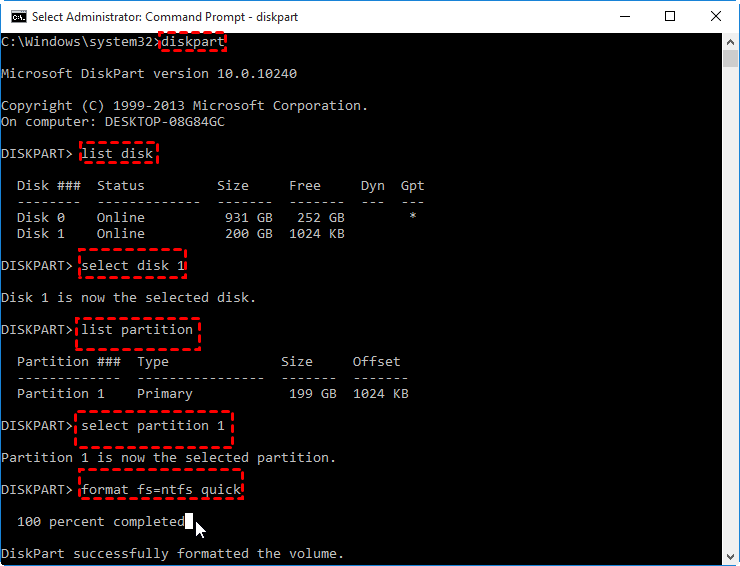

Marks the disk's partition with focus, as active.

You can run the following commands from the Diskpart command interpreter: Command You must be in your local Administrators group, or a group with similar permissions, to run diskpart. To start the diskpart command interpreter, at the command prompt type: diskpart If this isn't the case, focus on the disk and partition is lost. After a volume has focus, the related disk and partition also have focus if the volume maps to a single specific partition. After a partition has focus, the related volume (if any) also has focus. You can only give focus to a partition on the selected disk. For example, when you create a new partition, the focus automatically switches to the new partition. Some commands automatically change the focus. For example, if the focus is set on disk 0 and you select volume 8 on disk 2, the focus shifts from disk 0 to disk 2, volume 8. When you select an object, the focus remains on that object until you select a different object. List vdisk - Displays all the virtual disks on the computer.Īfter you run the list commands, an asterisk (*) appears next to the object with focus. List partition - Displays the partitions on the disk that has focus on the computer. List volume - Displays all the volumes on the computer. List disk - Displays all the disks on the computer. You can list the available objects and determine an object's number or drive letter by using: After an object has focus, any diskpart commands that you type will act on that object. The diskpart command interpreter helps you manage your computer's drives (disks, partitions, volumes, or virtual hard disks).īefore you can use diskpart commands, you must first list, and then select an object to give it focus.

#Diskpart format ntfs gpt windows
More items.Applies to: Windows Server 2022, Windows 10, Windows 8.1, Windows 8, Windows 7, Windows Server 2019, Windows Server 2016, Windows Server 2012 R2, Windows Server 2012, and Windows Server 2008 R2, Windows Server 2008 From the left pane (navigation pane) of the opened File Explorer window, right-click This PC. (The process of creating partitions requires administrative privileges on the computer.) Once logged on, click the File Explorer icon from the taskbar.
#Diskpart format ntfs gpt how to
How To Make Partitions In Windows 10 Log on to your Windows 10 PC with an administrator account. Step 2, In the popup windows, choose MBR or GPT. Step 1, Run Partition Expert, in the disk map, you can see the new disk, titled with Uninitialized, Right-click on this disk. NTLDR How to initialize disk to gpt or mbr from diskpart command? From the root folder of the system partition of your hard disk drive (for example, C:-), copy the following files to the floppy disk: Boot.ini. To create the startup disk, follow these steps: Insert a blank floppy disk in drive A, and then format the disk by using Windows XP. Select the external USB device and then start to create a bootable disk of EaseUS partition software. Launch EaseUS Partition Master, select "Create WinPE bootable disk" on the main window. Connect a USB flash drive, pen drive, memory stick, etc to a working PC. › American Independent Party Platform Summaryįrequently Asked Questions How do i create a bootable partition?ġ.


 0 kommentar(er)
0 kommentar(er)
